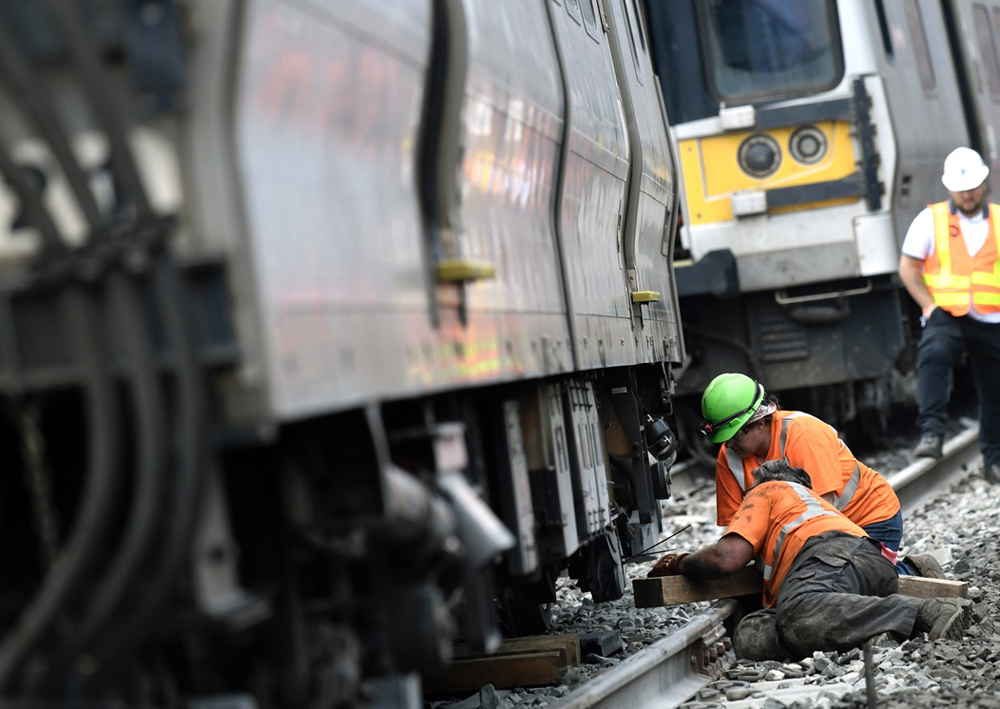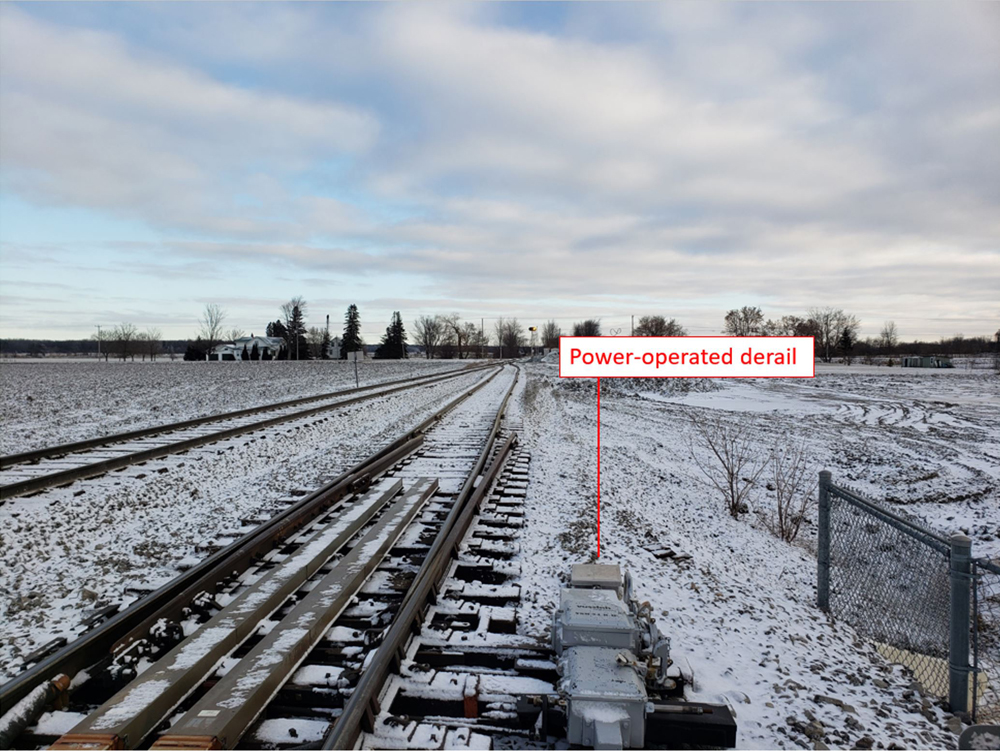
Railroading
Railroading is violent business. Freight cars coupling sound like small explosions, diesel engines reverberate like distant thunder, and horns at grade crossings are so loud that even deaf people can feel them.
So, with all of this violent sound going on, how do you get the attention of a railroader at work? Use more violence! In the form of track torpedoes, fusees, and derails.
Torpedoes
One of the oldest safety devices used in railroading is the track torpedo, a small dynamite charge that’s wrapped in paper (usually red), with lead straps to hold it firmly in place on a rail. When a locomotive’s wheel comes in contact with the torpedo, the weight of the engine sets off the charge, creating a loud bang that could only be ignored if a nuclear bomb were going off next to it.
Track torpedoes were standard issue in the lockers or tool boxes of most cabooses before the cabooses started to disappear. If a train had to stop on unsignaled or “dark” trackage, a rear-end crewman would strap the torpedoes to the track far enough back from the train so another train could stop after it exploded the torpedo. The appropriate distance could be a half-mile to several miles according to the rules stated in the employee timetables or rulebooks. You can imagine that crewmen were awfully sure-footed walking on ballasted right of way when they had to carry a small dynamite charge several miles.
Today, railroads don’t use track torpedoes as much as they did in the past, if at all. The two-way radio has made the track torpedo almost obsolete. Also, safety concerns over carrying dynamite on a train and injury to pedestrians has prompted many railroads to figuratively send the torpedoes to scrap with the cabooses.
Fusees
Another device often used in conjunction with track torpedoes to warn other trains is the fusee. While not as violent as the track torpedo, a fusee carries its own kind of danger, especially when it’s used around combustible or explosive loads.
By carrying its own oxygen supply, like a rocket, a fusee burns very bright and very hot. If you see a railroader holding a fusee in his hand, he has either got good gloves or a fresh fusee that hasn’t warmed up yet.
Most railroads require that a fusee be attended and include special instructions in their timetables and rulebooks to deal with unattended fusees. This has to do with stopping a fusee. Since they carry their own oxygen, you can’t put them out by smothering them. They just have to burn out.
Derails

One of the more destructive ways of stopping a train or car is the derail. As its name (pronounced DEE-rail) implies, its sole job is to derail a train or car.
Now why would railroads that spend untold sums of money to keep trains on the track want to derail them? It’s simply the needs of the many outweighing the needs of the few. Derails are generally used where an errant train or car could wreak havoc on a busy mainline track. It’s far better to derail one or two cars than to derail an entire train.
The most common location for a derail is on industrial sidings. You’ll always find a derail on a siding where a car-pulling winch is used.
The placement of derails is just as critical as on what tracks they’re used. If a car is moving too fast when it hits the derail and jumps on the ground, the momentum of the car will cause severe damage to several feet of track, and possibly allow the car make it to the main line where it can hit, or be hit by, a passing train.
Derails, therefore, are usually placed so a derailed car will be going slow enough that only one set of wheels is derailed and few ties are torn up. This also makes it easier for a crew to rerail the car later.
In railroading, there are two types of derails in use today, the point type and the wedge type.
The point-type derail is a single switch point. When it’s set in the “loaded” position, an errant car is sent down the diverging route to the ground. Point-type derails take quite a bit of space (they’re about 20 feet long) and involve modifying the rails, making them a more permanent installation.
Point-type derails are often used to protect isolated interlockings where a little-traveled or unsignaled branch crosses a busy, signaled main line. The derail physically keeps a branch line train from crossing the main line before the main’s signals are set.
The wedge-type derail is more often found on sidings. It’s basically a large metal casting that sits on the railhead so it can lift and derail a stray car. Most wedge derails are hinged so they can be folded out of the way when a car has to be moved on or off the siding. Switch locks are used to secure the wedge back over the rail after switching.
Some wedge derails are moved remotely by electric motors. These are often used at the throat of an industrial railroad’s yard or for a slow-speed interlocking.
Many derails are connected by mechanical linkages to their associated turnouts so that when the switch is lined for the main line, the derail is in place, and vice versa.
Now that you know how violent railroading can be, it makes the crashing and banging of freight cars being switched almost musical. Anyone for a violence concerto?














Railroad torpedoes made with “DYNAMITE” ?
US Patent 1704231, issued to Walter L. Wedger, lists the contents of the ‘Safety Railway Signal Torpedo’ thusly: “The explosive composition heretofore used in railway signal torpedoes comprises essentially potassium chlorate as the oxidizing agent, sulphur as the reducing agent, common sand as an abrasive to generate friction and increase sensitiveness to the impact of the locomotive wheel, and dextrine to serve as a binder when the explosive is moulded while in plastic form in or to fit the containers thereof.”
No small wonder TRAINS magazine has ZERO credibility, allowing foamers to write nonsense that goes unchallenged for years, even in the InterWebs !